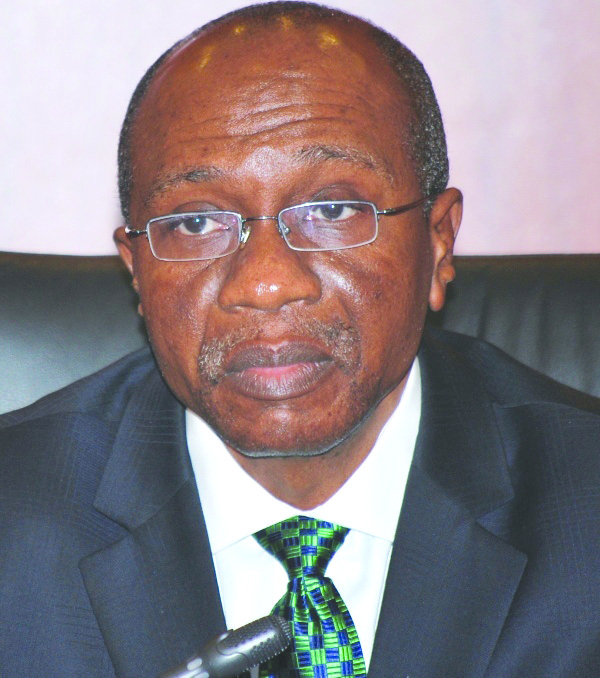[tweet][digg][stumble][Google][pinterest][follow id=”DER29709692″ size=”large” count=”true” ]
Recently, some former chief executives of banks returned as chairmen of their banks. This has a lot of implications for the banking sector and the prudential guidelines of the Central Bank of Nigeria, writes Osaze Omoragbon
In the last few months, erstwhile Bank chiefs Mr. Jim Ovia and Mr. Tony Elumelu predictably returned to their former banks as chairmen and non-executive directors of Zenith Bank and United Bank for Africa (UBA) respectively. More are expected to follow as the former ‘owner-bank MDs,’ as one insider puts it, are returning to oversee their interests.
The Central Bank of Nigeria (CBN) under the then leadership of Lamido Sanusi had in 2010 pegged the tenure of bank CEOs to a maximum of 10 years; with the intention of limiting the overbearing influence of the chief executives who saw the banks as their fiefdoms. The nation’s apex monetary authority specifically barred the former bank chief executives from holding office in any capacity in their former banks until after three years of leaving office. The tenure cap saw the exit of hitherto leading bankers; many of whom were owner-MDs. In addition to Ovia and Elumelu, Mr Sola Akinfemiwa of Skye Bank, Mr Aigboje Imoukhuede of Access Bank and Mr Reginald Ihejiahi of Fidelity Bank were affected. With the recent elapse of the moratorium, the old guard is back. In fact, Akinfemiwa has since emerged as the Chairman of Heritage Bank, a reincarnation of the defunct Societe Generale Bank.
Industry watchers had doubted the ability of the apex bank to keep out the former CEOs from their banks. The bank chiefs were thought to have planted their ‘boys’ as chief executives to ensure they retain their grip on the banks. Ovia handed over to his long time partner Mr. Godwin Emefiele, now CBN governor while Elumelu handed over the mantle to current CEO, Phillip Oduoza a loyal acolyte. Imoukhuede handed over to Herbert Wigwe, his long time deputy.
Sources say most of the tweaks to the prudential guidelines under Sanusi could be reversed, as the incumbent CBN governor is favorably disposed to such moves in a bid to shore up his loyalty base as well as appease former colleagues. Indeed, there are speculations that Ovia played a key role in the emergence of Emefiele as the CBN Governor. “Emefiele is not going to be ambitious in carrying out reforms. He could even reverse some of the extremes,” says a banker who craved anonymity. To analysts, Emefiele lacks the political base to initiate bold reforms such as those undertaken by Professor Chukwuma Soludo and Sanusi, who had regional political blocs behind them. “Despite outcries from sections of the country Soludo initiated the consolidation programme successfully while Sanusi drove through the introduction of Islamic banking,” says a source. This theory is underpinned by the fact that Emefiele is facing severe opposition in his bid to reform operations of Bureaux de Change, which is vehemently being rejected by some sections from the north. Emefiele seems to have understood the game by promising to build a central bank that is apolitical in his maiden public address.
Top on the list for reversal, according to sources, is the tacit criminalization of Expanded Discount Window (EDW), which Sanusi used as a launch pad to sack bank chiefs. The EDW was set up by the Soludo-led CBN to assist banks in meeting their liquidity needs.
The forced reduction in Commission on Turnover (COT) is also another policy set for reversal. The former governor felt the banks were making a kill with the commission on turnover even as the Cash Reserve Requirement (CRR) was low. The good news, according to bank sources, is that some of these regulations were not codified as they could be reversed with just a circular. Another good news, sources say, is the fact that Emefiele seems pliable and as such could be lobbied by the Bankers’ Committee to bring reform that could be beneficial to the industry.
The old guard could lobby, for example, to make chairmanship position an executive one while changing the reporting structure. Analysts say this is not far-fetched as it obtains in the developed countries. The CBN Act allows the governor to combine chairmanship of the board and daily business of running the bank. If and when done, this will allow them to take effective control of the banks. Jamie Damon combines the position of Chairman and CEO of JP Morgan, the largest bank by assets in the United States.
The reporting structure could also change to enable them further have say. This, if done, will strenghten the grip of the chairmen on their banks.
The ability of the returning former bank chief executives and indeed the Bankers’ Committee to influence policy outcomes remains to be seen.
[divider]


